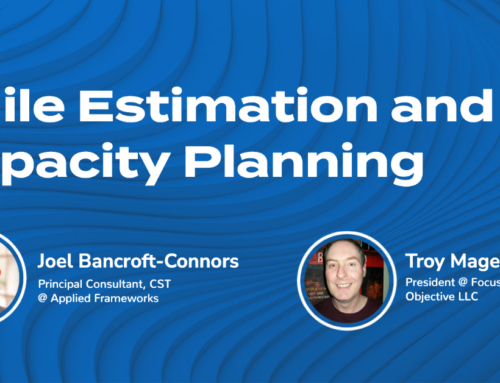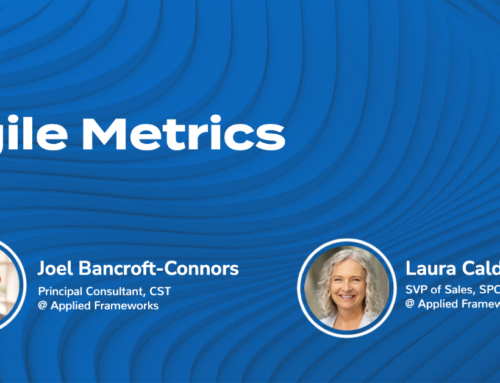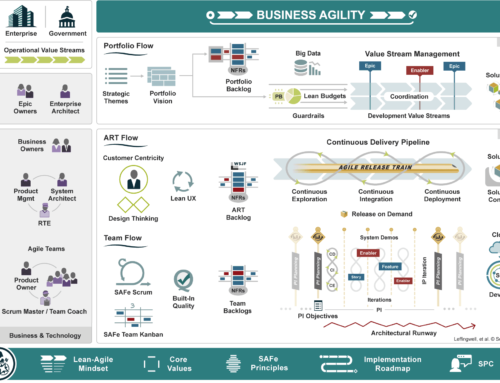My greatest strength as a consultant is to be ignorant and ask a few questions.—Peter Drucker, American management consultant and author
Interviewing is both an art and a science. Knowing when to speak and when to listen. Letting the client expand on an idea but also keeping to your agenda.
Let’s look at some best practices for interviews. These techniques describe the key steps of phone interviews but are equally applicable to onsite interviews. What’s great about an onsite session is you can immerse yourself in their business and processes. You can watch them do the work. As they say, you can observe a lot just by watching. With a interview roadmap and a list of names, you’re ready to start setting up appointments for your client interviews.
Interviewing clients: a field guide is a three-part series, including:
Part 2: Conducting the interview
Scheduling the interview
You will never find time for anything. If you want time, you must make it.—Charles Bruxton, British politician
I tend to be fairly organized with my schedule. I like to set up calls at specific times so I’m prepared and engaged. Maybe it’s anti-social but I rarely answer calls that come out of the blue.
It was once considered rude to send an email to someone you’d never met but nowadays people seem to prefer an email introduction before a phone call. I know I do. On the other hand, many still prefer a phone call prior to an email. After all, people are different! Let’s combine these two into an appointment procedure that uses both effectively.
Here’s how to set up an appointment for a client interview.
First, place a call to the person you want to interview. If they actually answer, ask if they have time for a short discussion. If they don’t have time now, schedule an appointment for later in the week and follow up with an email confirmation. If you don’t reach them at all, you’ll either get voicemail or an assistant.

Source: Buyer Persona Institute at http://www.buyerpersona.com
Create standard emails and voicemail scripts for each of these scenarios. I’ve written some simple scripts to get you started.
After an initial phone call, send an email either requesting the appointment or confirming the date and time of the agreed-upon appointment. Include a calendar invitation in your email so they will put it on their schedule.
On the day of the appointment, send another email reminder so they’ll be ready for your call; be sure to include the calendar invitation in your reminder message.
Block your schedule
If you don’t make your own schedule, somebody else will. Then that person will control your work.—Watts Humphrey, American software engineer
For each scheduled interview, block an hour on your calendar. You’ll need 15 minutes to prepare, 30 minutes for the interview itself, and 15 more minutes for wrap-up. And then do it all again for the next interview.
Block 15 minutes before the interview. Get yourself physically ready. Go to the washroom. Get a glass of water. Review the client info from your company databases and trouble ticketing system. Also check out their web site to be familiar with what they do. Get your head into the client information.
Block 30 minutes for the interview. An interview may take less time; it may take more. Plan on roughly 30 minutes. Never try to schedule an interview when your meeting schedule is tight.
Block 15 minutes after the interview. Before you talk to anyone else, you want to review your notes, expand on the areas where you’ve been cryptic or vague, and generally wrap up the interview. Remember, as soon as you talk about another client or another issue, you’ll lose most of the information that you’ve kept in your head.
Recording the call and taking notes
People tend to be more confident and more willing to state their opinions when they’re talking on the phone.— Kristin Zhivago, author, Roadmap to Revenue
I’ve found people are more forthcoming on the phone than they are face-to-face, particularly when they have something negative to say. You’ll get loads of good information in a phone call so it’s best if you can record the call. It saves you from having to write down everything while attempting to hold up your side of the conversation. A recording will make note-taking easier, especially for those great phrases you’ll want to use as quotes later.
But for some reason, many who are new to interviewing are uncomfortable asking if they can record the call. Yet I almost never encounter an objection; those being interviewed rarely have a problem with it. Just ask: “Do you mind if I record this call? It will make it easier to take notes.” Assure them you won’t share the recordings with others.
When you’re recording, make notes of time-marks you want to revisit. You’ll want to look at these again later. Ideally, you’ll want to get the recordings transcribed so you can scan the text quickly. There are many inexpensive services available and your company may already use a service.
If you can’t record the call, you’ll definitely want to conduct interviews with a colleague. They’ll likely hear something you didn’t and they can take more comprehensive notes than you’re able to while you’re concentrating on the discussion.
The client interview
Customers will tell you things when being interviewed that they will never tell you while you are selling to them.—Kristin Zhivago, author, Roadmap to Revenue
As with presentations, the first minute is critical. You have to prove you’re not really trying to sell them something and you need to prove that you understand their issues. After all, we’ve all had to deal with call center people who are only following a canned script.
That said, memorize your first minute, using the voicemail and email scripts developed earlier as guides, so you don’t fumble the opening.
You’ll be following your interview roadmap but remember: it’s not an interrogation; it’s a discussion. Your roadmap guides you from topic to topic but you should feel free to let the conversation find its own path. Your clients may want to talk about their current issues so you’ll need to let them express their thoughts.
The key to a successful interview is to avoid selling and telling. You’re likely to hear the need for an additional option or service, and you’ll want to offer it to them. Or you’ll realize the client misunderstood a critical feature and you’ll be inclined to explain it to them. But as soon as you start talking about your company and product, you’ll lose them.
In particular, don’t defend your product or your company reasoning. Decisions are made that affect some clients negatively. That happens. After all, you’re not in the business of serving one client. For example, you dropped the basic support option because it was cost prohibitive. You may not even agree with the decision. But don’t explain it or defend it. Your goal is to let the client express his or her frustration and then move on.
As much as we love to keep things digital, an interview is one place where you should take notes on paper. Don’t let your technology get in the way. Print your interview roadmap so you can keep track of what’s been asked and quickly spot the upcoming questions. Make it LARGE with lots of white space and narrow margins. Scribble notes, flag certain questions that you want to revisit, and even doodle in the corner if you want.
Remember this is a discussion, not a survey; give the buyer time to think. Ask a question and then pause for a 3 count. For whatever reason, we seem to hate silence. A few seconds often feels endless. Just think of how frustrating it is to talk to teenagers; they ramble on at very high speed while you’re still trying to figure out how to reply to a question from 30 seconds ago (or is that just me?) Give your buyer time to think.
Finally, avoid using your cell phone or a Bluetooth headset. A good old-fashioned landline (and a good, wired headset if you like) gives much better reception. I’ve had numerous phone conversations with such poor quality that I wasn’t able to hear the questions and comments clearly so I just cut the conversation short.
Favorite questions
The first answer is the one you already know.—Adele Revella, founder, Buyer Persona Institute
You’re asking questions and getting some good answers. That’s great. But sometimes you’ll get a partial answer or a “soft” answer and you’ll want to ask the question again. “Tell me more” is a fine prompt to get more specifics. However, you can’t use it after every question so here are some good alternatives to extend the subject:
-
“Can you elaborate?”
-
“Could you give me an example?”
-
“Can you explain that again differently?”
-
“Of all the things that went on, why did that stick out in your mind?”
Now it’s time to start wrapping up. You’ve been on the phone for 20 minutes or so and you’ve covered most of the questions you wanted to ask. Before you sign off, add one or more of these:
-
“What else do you want to share?”
-
“What should I have asked that I didn’t?”
-
“If you were sitting down with the CEO, what would you want to say?”
Next steps
However beautiful the strategy, you should occasionally look at the results.—Winston Churchill, British prime minister
Sometimes it’s better to think of yourself as an agency rather than an employee. Don’t admit to having access to any company systems. That is, don’t look up their client history or trouble tickets; you don’t want to turn an interview into a support call. Instead, tell the client that you’ll notify the appropriate department who will do the follow-up.
Never give any client-specific information to your colleagues unless the client approves it. If there were any sales or support issues, ask the client if you can send the information to sales or support. Most clients will be glad to have you forward their information, and all clients will appreciate that you asked before doing so. Send the information (now, before you forget) to the appropriate department.
Immediately after the interview, take a few minutes to review and expand your notes. Then take a few minutes to compare your notes with those taken by your colleague. Don’t jump into another customer issue or you’ll forget some of the nuances from this conversation.
And take a moment to reflect on what you’ve learned. Pat yourself on the back for completing a successful interview. Take a short break and then do it all again.
Once you have a few interviews, you’ll begin seeing some trends and then you’re ready to start analyzing for patterns. And that’s what we’ll do next in Customer Interviews: Analyzing the Data.







Excellent (and very generous) information here, Steve! I got a few new ideas and felt validated that I’ve ‘already got it right’ on quite a few things, too! Thanks so much for the series!